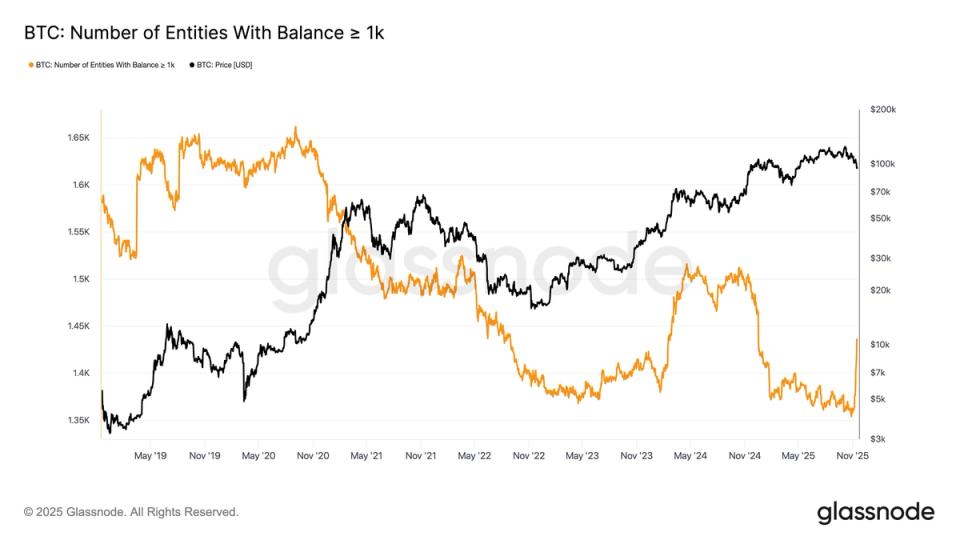Over the past week, the number of unique units with at least 1,000 BTC has increased to 1,436, even as bitcoin has fallen and stuck below $100,000.
This marks a sharp reversal from the broader 2025 trend, where “OGs” and long-term participants have been steady net sellers.
For context, this cohort peaked over 1,500 units in November 2024 in the excitement and bull following Donald Trump’s election victory. It fell to around 1,300 in October.
The last time a price increase was seen with an increase in large holder units was in January 2024, ahead of the US ETF launch, when the number rose from 1,380 to 1,512 units. Bitcoin ultimately peaked around $70,000 a few months later.
Additional evidence supports this from the accumulation trend score from Glassnode, which breaks down wallet cohort behavior.
This metric measures the relative strength of coin collection across different balance levels based on unit size and the amount of coins accumulated over the past fifteen days. A reading near one indicates accumulation, while a reading near zero indicates distribution. Entities such as exchanges and miners are excluded.
For the first time since August, whales with more than 10,000 BTC are no longer big sellers, with their score now around 0.5. Units with between 1,000 and 10,000 BTC now show modest accumulation.
The strongest accumulation comes from holders with 100 to 1,000 BTC and from wallets with less than 1 BTC. The data suggests growing conviction by both large and small entities that bitcoin is undervalued at current levels.



